
Home » The Border Terrier’s Vocation: The Key to Preserving Breed Type
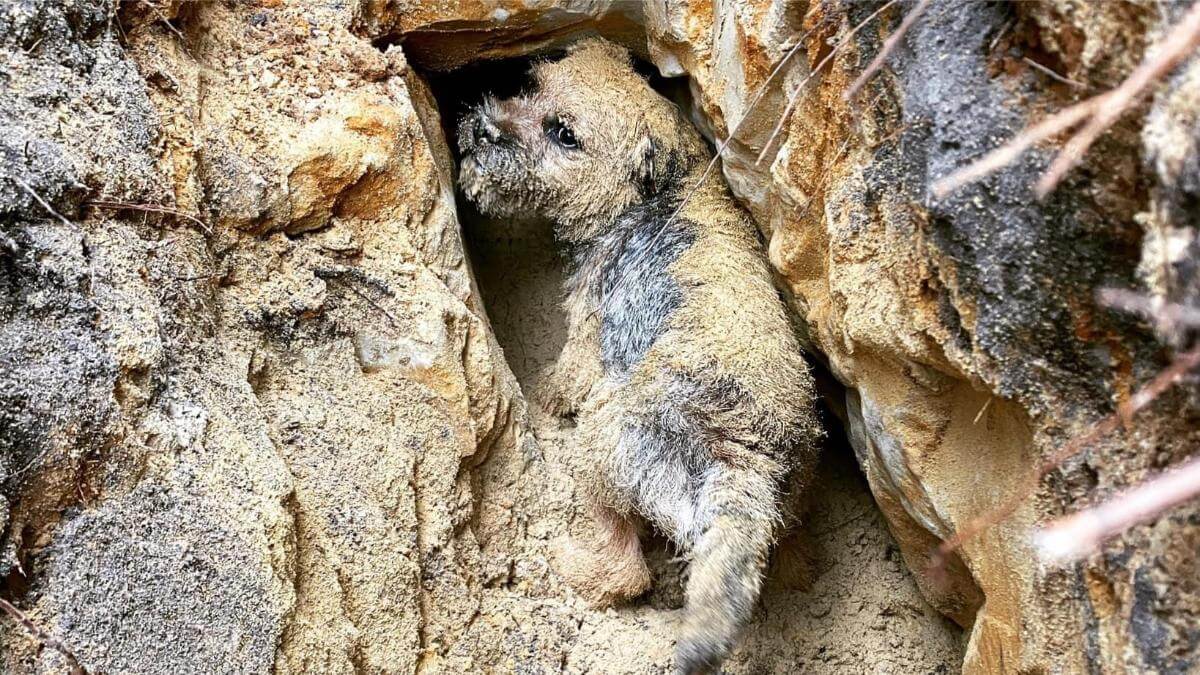
In many breeds of dog, the type and conformation of the breed was and is determined by the specific use and function for which the breed is intended. That need is defined by specific criteria particular to the function and the environment in which the dog is meant to work. The almost endless variation of tasks, functions, and environments are the factors which give rise to the vast number of differing breeds we have today. The quest for excellence in a single role continues today and prompts breeders to continue their efforts to preserve and protect the breed characteristics that enable it to excel in its designated vocation.
The breed was created specifically to hunt the Red Fox in this scenic and rugged countryside, as much out of necessity as out of the desire for sport.
For its part, the Border Terrier was developed along the western end of the border between England and Scotland in an area known variously as the Lake District or the Fells. The breed was created specifically to hunt the Red Fox in this scenic and rugged countryside, as much out of necessity as out of the desire for sport. The fox was and is hunted by the venerable packs such as the Blencathra, the Ullswater, the Coniston, and their equally iconic huntsmen. Given the mountainous topography, these packs hunt on foot, not on horseback.
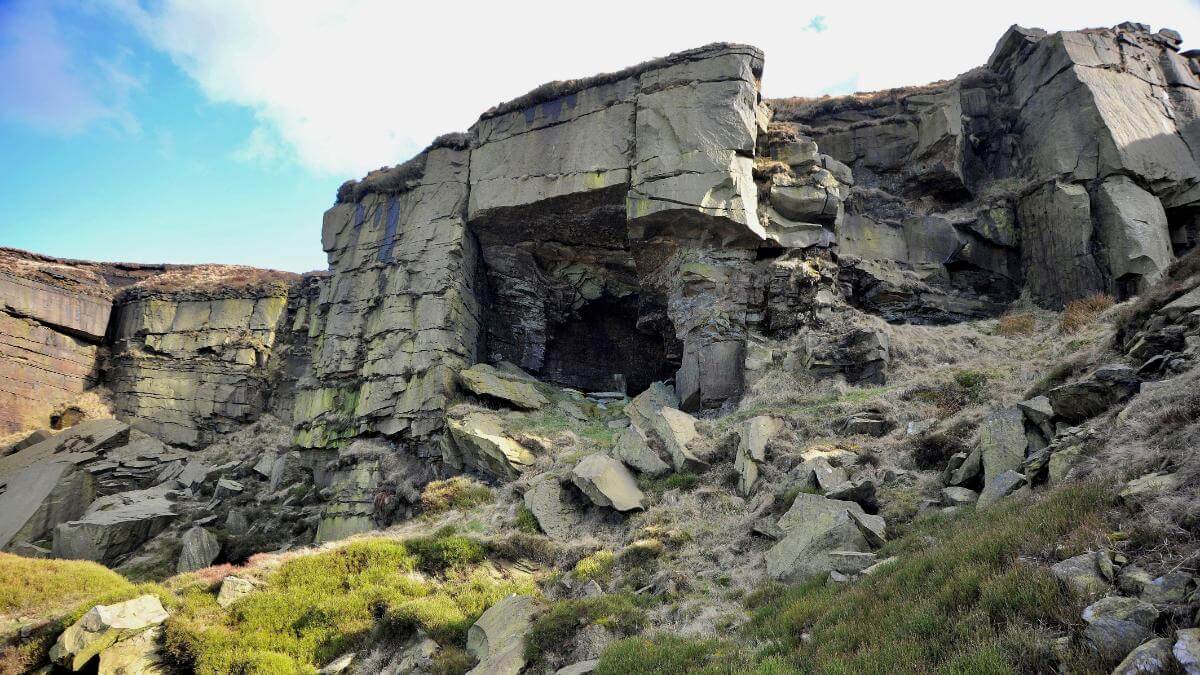
In comparison to some of the “ancient” canine breeds, Border Terriers are a relative newcomer, appearing on the British hunt scene during the mid-1800s. Originally, they were called the Coquetdale Terrier or the Redesdale Terrier, both names making reference to the towns where they were bred and worked. Not many miles away, other hunters in the Town of Bedlington were working on their own breed of terrier, particularly suited to coursing and night hunting. The purposes are different, the landscapes are different, and most assuredly, the breeders of each type and the dogs they produced are different.
Foxhunting in the border counties was and is a markedly different pastime than our modern hunts in America and the well-organized and financed hunts of the British Midlands and south. No mounted staff with a hundred followers, but rather, a gnarly huntsman and a pack of hounds, themselves bred with anatomical features that allow them to adapt to the environment. Most of the fells are over 1,000 feet in height, composed entirely of volcanic igneous rocks which are both incredibly hard and very, very steep. There are often large deposits of scree (sharp gravel) near the base which wreak havoc on the feet of humans, hounds, and terriers.
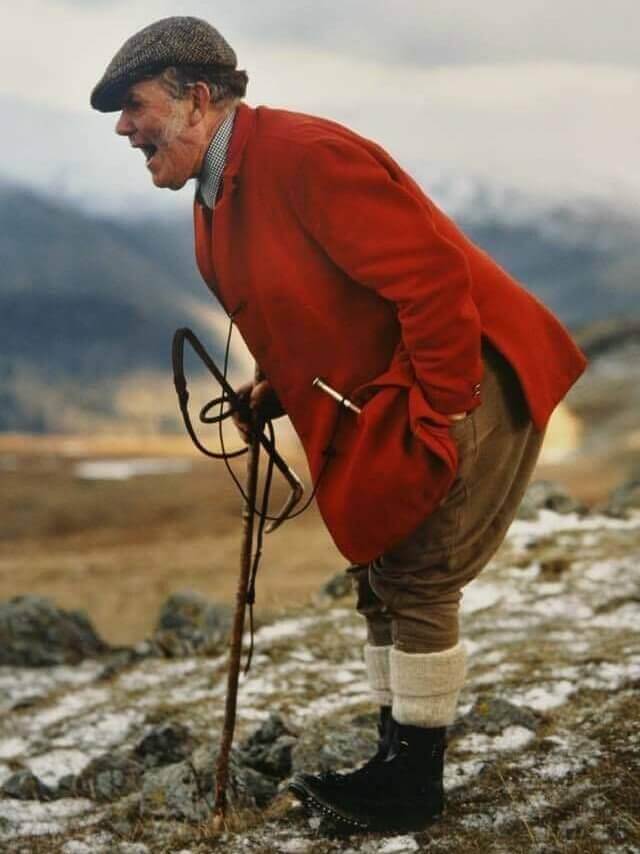
This same region holds a large concentration of sheep farms which themselves take advantage of the topography and are a means of livelihood and support to a large segment of the population. As in the rest of the UK, the Red Fox is at the top of the food chain and has been hunted as a predator (particularly to lambs) for centuries. Every organized hunt, now as then, responds to “call outs” from farmers who have sustained livestock damage and loss from predatory foxes. Often, the foxes den up in clefts in the rocks found throughout the area. Once put to ground by the pack of hounds, it is up to the terrier to bolt or dispatch the quarry.
So, we are not hunting the fox in the fells exclusively for sport, but for necessity. No verdant fields, inviting stone walls, or pre-built fence panels. Packs of English Foxhounds were bred a bit differently to enable them to climb and travel the fells. No fox dens used by successive generations, and enlarged and remodeled, each now tenant. No opportunity to dig down to your terrier and resolve the situation and rescue the tyke. Instead, the terrier is sent into a dark, hard, cramped, and unforgiving den to complete its task of worrying, bolting, and sometimes dispatching a formidable opponent, a vocation that requires a specific set of tools. This same set of circumstances also led to the development of the Patterdale, Fell, and Lakeland Terriers, breeds which share a remarkably similar DNA but are distinctly different from the Border Terrier.
The current AKC Standard for the Border Terrier was not written by huntsmen, but it clearly conveys the attributes absolutely necessary for the breed’s success as a working terrier. (In the vernacular of the original terriermen, the “working terrier” is limited by definition to one whose principal purpose is to enter an animal’s natural den underground and worry or dispatch the quarry.) The long-legged terriers, although they may work hard at their own vocation, do not fit that narrow definition.) That same Standard still provides a Scale of Points that attempts to assign a relative value to various parts of the Border Terrier’s conformation, and it does a pretty good job of that. It is only by actually working the dog at its original, singular, unique vocation that you form your own priorities of virtues and faults.
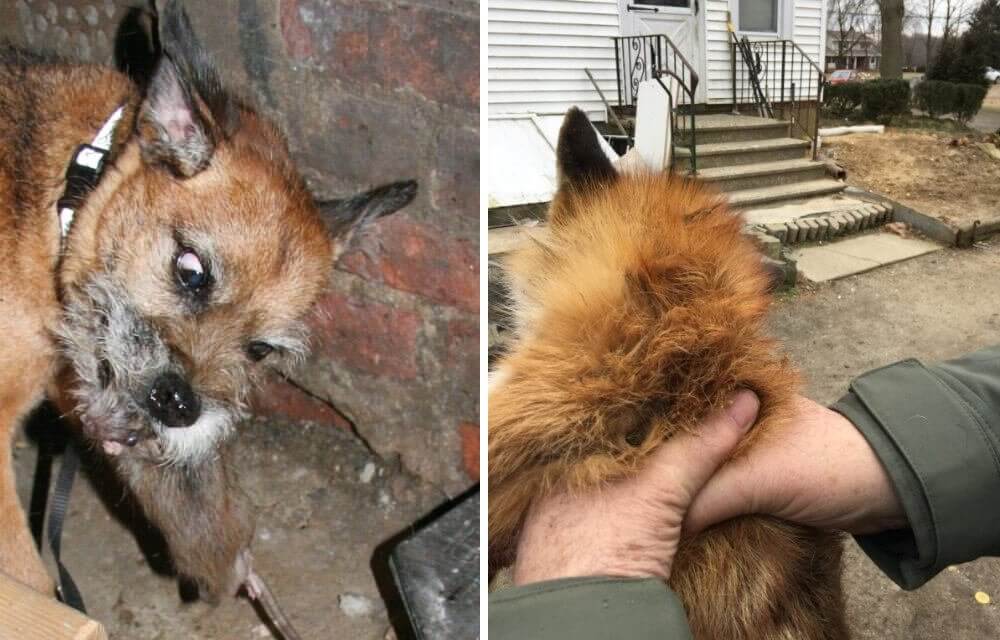
The Standard has a Scale of Points (which used to be in many Standards but has disappeared from most) that attempts to value broad areas of conformation. The Scale isn’t wrong! It does not, however, accurately call attention to those qualities that are absolutely essential to the BT in its daily work, whether in the fells of England or the fields of New Jersey.
There are two qualities that should rank uppermost in the minds of any breeder, judge, or hunter. The first of these is, “capable of being spanned by a man’s hands behind the shoulders.” The second is, “Hide very thick and loose fitting.” Both are vital to the dog’s ability to do its work properly, in fact, to survive altogether in its subterranean efforts.
The Border Terrier is primarily designed to hunt the Red Fox (Vulpes vulpes), and like many terriers, the BT’s conformation somewhat resembles that of its quarry. All Red Foxes are easily spannable, most of them with a narrow girth of chest that enables them access to dens and sanctuaries inaccessible to the majority of their pursuers. By the same token, the foxes have a loose-fitting skin that enables them to seemingly “ooze” through openings as small as two inches by four inches, an ability which again will defeat most pursuers. As Conformation judges, we have an absolute responsibility to confirm the girth of chest through proper spanning (and knowing what to do with the information gained from the process) and “pelting,” both of which are essential to the working Border Terrier’s survival. Neither attribute is mentioned specifically in the Scale of Points and space does not permit us to deal with it here. The manual technique for spanning and pelting is easily mastered, but the real challenge is incorporating the information resulting from those exams into your final decision. In the ring, it’s a simple matter of priorities. In the field, it’s a matter of life and death.

Another barely noticeable requirement of the Standard is, “Back strong but laterally supple.” It is the ability of the BT to navigate the tight rock-encased dens (and for that matter, even our earthen tunnel in the US) and not only reach its quarry, but to actually turn around in those tight quarters. We can’t test specifically for that lateral flexibility, but a dog that feels stiff, or cannot be compressed while spanning, often lacks the requisite elasticity to enable it to work effectively in the earth.
Like many breeds, the Standard calls for “hocks well let down” and additionally “flexing of stifle and hock.” These few unemphasized words are actually as important as the characteristics of the sharp end of the dog. The BT is not considered a “hard terrier” by the terriermen (of both sexes). Its style of hunting is to locate its quarry deep in the earth and attempt to force it into a dead end or cause it to bolt. BTs work with a charge and retreat type of attack, a technique that keeps it relatively safe and encourages the quarry to attempt a bolt. In order to do this, the dog needs to collect its rear legs under it in order to shift into reverse. Excessively long or stiff hocks can prevent retreat and actually endanger the dog. Judges can easily gauge the relative length of the hock and can see its flexibility while observing the side gait.
The headpiece of the Border Terrier is indeed a hallmark of the breed. It is uppermost on the Scale of Points and the “head like that of an otter” is mentioned twice. The Border Terrier Club of America, which has done an outstanding job of preserving the working qualities of the breed, often offers a class for Best Otter-Shaped Head at its specialties. It’s not all hype. The factors that contribute to the shape of the head, such as a muzzle that is “well filled” and a “moderately broad and flat” skull, serve to deflect injury. The same breadth of skull and foreface that creates the head like that of an otter also virtually eliminates the possibility of a weak underjaw and/or misplaced canine teeth.
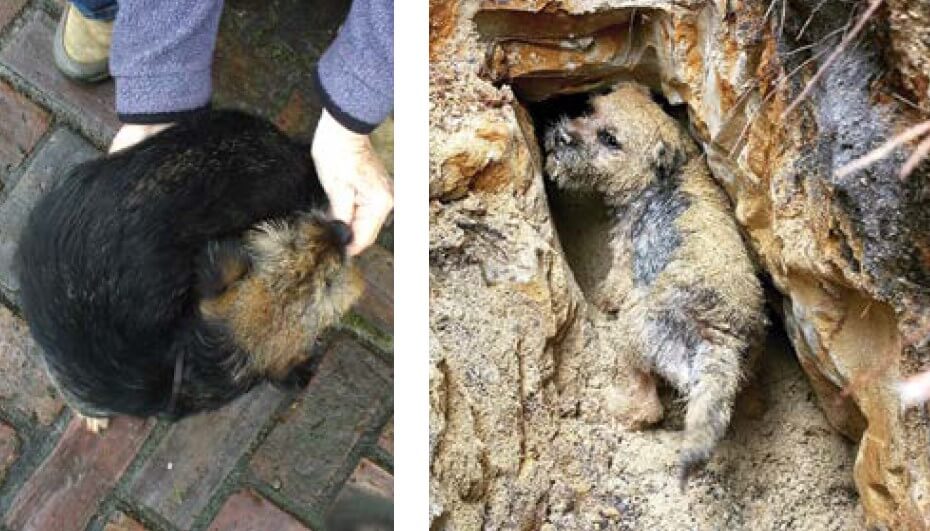
And finally, let’s not forget the tail, “thick at the base, then tapering.” Think of it as a rescue tool to allow the hunter to remove the terrier from harm’s way. It’s also a mighty convenient handle even outside the den. The tail is “Not set on too high,” to reduce the likelihood of a snap tail which would lodge between the tunnel and the back, making retrieval of the dog by this means impossible. (If showing at Crufts, you may want to disregard this paragraph.)
The takeaway here is that if one understands the vocation of the Border Terrier and how it differs from the more than 30 other breeds in the Terrier Group, one can easily apply the Standard which was written to create working prowess to the exhibits in the Conformation ring. Most of the Border Terriers that are currently in work both here in the US and abroad have come from breeders who breed primarily for the Conformation ring but have a keen awareness of the requisite working qualities. The diligence of these breeders and the knowledgeable adjudication by judges who are well aware of the Border Terrier’s vocation will ensure the preservation of breed type in this unique terrier.
